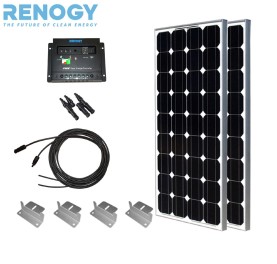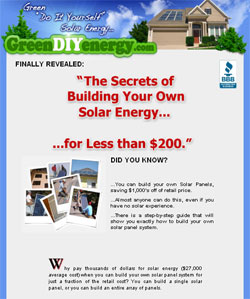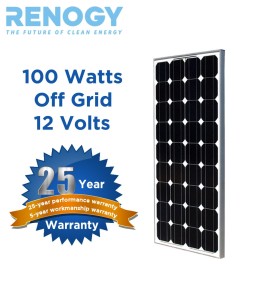
Apart from the conscious effort to reduce our carbon footprint, one major factor that has convinced a lot of homeowners to install “do it yourself solar panels” is the rising cost of electricity bills. But before we go into the advantages and disadvantages of making your own solar panels (or using DIY kits), we have to first understand how the solar panels works.
Solar panels operate by capturing energy from the sun and converting it to electricity. Panels come in different size depending on the need but all panels are built pretty much the same way-using solar cells that are wired together. These solar cells are the ones that convert the sun’s rays into electricity.
Besides helping save the earth, in many countries one major advantage of using solar panels is the enjoyment of financial incentives from the government, including the option to sell excess energy back to the local utility company at a profit. If that’s not enough, solar panels can also increase the value of your home, regardless of whether your solar panels are home-made or store bought.
The downside of government incentives is that if you are waiting for someone to supply and install your solar panels, you could be waiting a while. We waited six months to have our solar panels installed, and longer to have the local government authority approve the installation so it could be turned on!
Despite sounding complicated, DIY solar panels are apparently quite easy to make. You don’t have to be a rocket scientist to build one. Plus, all the tools and materials you’ll need can be found at your local hardware for under $200. And making your solar panels will likely save you upward of 75%. Particularly if there are no government incentives available, this might be a good option especially if you are thinking of installing a solar panel for the sole purpose of saving money on electricity.
On the other side of the coin, if you live in an area where you can receive a feed-in tariff for feeding electricity into the grid, check whether you can do this with DIY solar power. At the very least you will probably need a licensed electrician to connect your solar panels into your house, but this may be a local government requirement anyway.
The other disadvantage of DIY solar panels is that they are unlikely to have the same efficiency as professionally built panels. This means that if you have limited space or limited sunlight you might be better to go with a quality brand.
 As far as cost goes though, homemade solar panels are amazing. With a DIY solar panel, you can easily recover the money you that you spend on materials and supplies from savings in electricity, and quickly.
As far as cost goes though, homemade solar panels are amazing. With a DIY solar panel, you can easily recover the money you that you spend on materials and supplies from savings in electricity, and quickly.So how on earth do you make your own solar panels? I mean, where do you start? Well, basically you will buy a bunch of solar cells (about 3×6 inch), wire them together, and build a container for them. You can find various different blueprints for how to do this online. If you are looking for step by step instructions, one source is GreenDIYenergy, who supply not only a detailed instructional guide, but also accompanying videos (please note though, I have not tried them out). Earth Garden Magazine had a story a while ago on how a family made their own solar power system from scratch, but unfortunately I can’t find it online. You may find it in your local library.
A more expensive but simpler option for the slightly less handy do-it-yourselfer, is to buy a DIY solar power kit. In this option the panels are already manufactured, you don’t need to wire together individual solar cells, and everything you need should be included. Kits available range from mini five or ten watt DIY starter kits to larger kits such as the 200 watt kit pictured above, right up to massive 5kw systems to power a whole house. However, do your research before purchasing one of these larger systems, as you may find the economy of doing it yourself is so significantly reduced compared to true DIY panels, that it is just as easy to employ a professional to do the whole thing for you.
What ever you choose to do, for any major system please have a licensed electrician look over your work before you turn it on. If this sort of DIY work is new to you, it may be a good idea to try making a mini system (to run a single small appliance), before you tackle something big.

In summary
Pros for DIY solar panels (the made from scratch kind):
- Save a lot of money
- Feel good about your DIY prowess!
- You might save time, compared to waiting for a professional installer
Cons:
- Likely to be less efficient than professionally built panels
- No warranty
- May still need a licensed electrician to install in order to be eligible for grants or a feed-in tariff
- You have to do it yourself!


